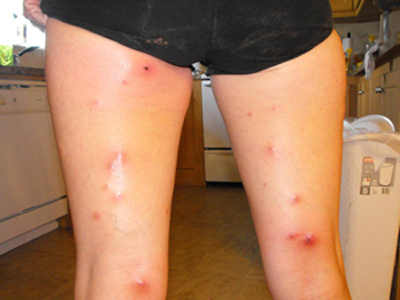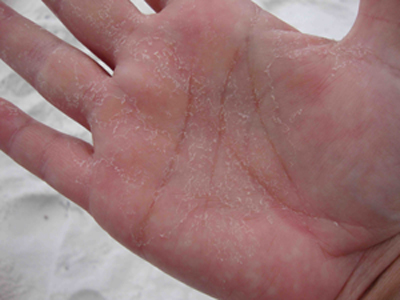--------------------------------------------------------
http://www.huffingtonpost.com/riki-ott/emoilgateem-bp-and-all-th_b_667709.html
The official story does not match the reality that I saw from the Cessna or have heard from people I have met during community visits since the well was temporarily sealed - and ever since I first arrived in early May. Public health is a huge concern - and with good reason.
BP has created Frankenstein in its Gulf laboratory: an oil-dispersant chemical stew that so far has contaminated over 44,000 square miles of ocean and caused internal bleeding and hemorrhaging in workers and dolphins alike, according to Hugh Kaufman, a senior policy analyst at the EPA, who recently blew the whistle on the industry-government cover up. BP has sprayed dispersants steadily in the Gulf with Coast Guard approval from the beginning - under the sea, on the surface, offshore, near shore, in inland waters, at night, during the day - despite a public uproar to cease and desist.
The dispersants used in BP's draconian experiment contain solvents such as petroleum distillates and 2-butoxyethanol. Solvents dissolve oil, grease, and rubber. Spill responders have told me that the hard rubber impellors in their engines and the soft rubber bushings on their outboard motor pumps are falling apart and need frequent replacement. They say the plastic corks used to float the absorbent booms during skimming operations dissolve after a week of use. They say the hard epoxy resin on and below the waterline of their fiberglass boats is also dissolving and chipping away. Divers have told me that they have had to replace the soft rubber o-rings on their gear after dives in the Gulf and that the oil-chemical stew eats its way into even the Hazmat dive suits.
Given this evidence, it should be no surprise that solvents are also notoriously toxic to people, something the medical community has long known. In Generations at Risk, medical doctor Ted Schettler and others warn that solvents can rapidly enter the human body: They evaporate in air and are easily inhaled, they penetrate skin easily, and they cross the placenta into fetuses. For example, 2-butoxyethanol is a human health hazard substance: It is a fetal toxin and it breaks down blood cells, causing blood and kidney disorders.
I suspect that the oil-chemical stew is likely the culprit behind the strange rashes reported by people across the Gulf - rashes that break out into deep blisters on legs or repeated peeling on hands. Stories accompany the rashes, stories of handling dead sea turtles, wading or swimming in the Gulf, or washing clothes of spill responders. Medical doctors are diagnosing rashes as staph infections or scabies, but the rashes are not responding to medical treatment as they would if the causation was biological instead of chemical.


In Sound Truth and Corporate Myths, I wrote of similar rashes and peeling skin experienced by Exxon Valdez spill responders, especially ones who used dispersants and other chemical solvents. Yet in the Gulf, many doctors are turning a blind eye to chemical causes, because BP insists that solvents "disappear" after only a day or two. Retired toxicologist and forensic chemist John Laseter disagrees. Laseter's long career includes evaluation of human health effects of some of the largest toxic chemical and petroleum releases into the environment in the United States and Europe. He also founded and ran Accu-Chem, a lab that analyzed blood work for criminal justice cases.
Laseter told me that solvents "solubilize" or become soluble in oil and remain a threat for up to two months. He said the oil-solvent mixture sticks on biological tissue - gills of fish, the organic film coating sand grains and raindrops - and can wreak havoc. He told me that the dispersants are "almost certainly" making the oil penetrate more deeply into the skin and could very well be causing the rashes in the Gulf. Other toxicologists confirm that dispersants amount to a "delivery system" for oil: the combination is worse for human and sea life than the oil or dispersant alone.
Yet all the president's men - the Coast Guard, OSHA, NIOSH, FDA, and the EPA (except the EPA whistleblower noted above), in keeping with the cover up, cannot seem to find any unsafe levels of oil or solvents in the air or water. But other people are.
For example, about a week after the oil started coming ashore in Alabama, the Mobile television station WKRG took samples of water and sand from Orange Beach, Gulf Shores, Katrina Key, and Dauphin Island. The test was nothing fancy. The on-air reporter simply dipped a jar into the ocean and another into some surf water filling a sand pit dug by a small child. In the samples, oil was not visible in the water or the sand, but the chemist who analyzed them reported astonishingly high levels of oil ranging from 16 to 221 parts per million (ppm). Except for the Dauphin Island sample -- that one literally exploded in the lab before testing could be completed. The chemist thought maybe the exploding sample contained methane or 2-butoxyethanol.
There is also evidence of dangerous levels of oil in the air. A preliminary study commissioned in mid-July by Guardians of the Gulf, a community-based nonprofit organization in Orange Beach, Alabama, found that nightly air inversions - common in the area during the summer and fall - were trapping pollutants near the ground.
Total Volatile Organic Compounds (VOCs) - including the carcinogen benzene, and oil vapors - reached 85 to 108 ppm at 9:00 a.m. but rapidly dropped to zero (or nondetectable) within half an hour as the sun burned through the inversion layer. (For comparison, the federal standard for 15-minute exposure to benzene is 5 ppm.) The EPA did find unsafe levels of VOCs once in early May, but pulled much of its early data, as I reported earlier.
Such high levels could explain the bout of respiratory problems, dizziness, nausea, sore throats, headaches, and ear bleeds that I have heard about from residents and health professionals from Houma, Louisiana, to Apalachicola, Florida. Even the oil industry knows that these chemicals are unsafe. As long ago as 1948, the American Petroleum Institute confirmed, "The only absolutely safe concentration for benzene is zero."
When we landed after our 2-hour flight, our pilot told us that she sometimes has to wipe an oily reddish film off the leading edges of her plane's wings after flying over the Gulf. Hurricane Creekkeeper John Wathem documented similar oily films on planes he chartered for Gulf over-flights. Bonnie doesn't wear gloves when she wipes her plane. She showed me her hands -- red rash, blisters, and peeling palms.
If peeling palms are an indication of the oil-solvent stew, the reddish film on Bonnie's plane and others means that the stew is not only in the Gulf, it is in the rain clouds above the Gulf. And in the middle of hurricane season, this means the oil-solvent mix could rain down anywhere across the Gulf.
Why all this pretend in the Gulf by BP and all the president's men except the EPA whistleblower that oil and dispersants are not toxic? By comparison, last week in Calhoun County, Michigan, an Enbridge pipeline ruptured, spilling at least 19,500 barrels of oil. At least thirty families were temporarily relocated because of the stench and roads and beaches were closed. Health officials have warned people to stay away from the fumes and beaches, and to avoid swimming and fishing near oiled areas. "It's a very toxic and dangerous environment," Calhoun County health officer Jim Rutherford said.
If spilled oil is "toxic and dangerous" in Michigan, it's also toxic and dangerous in the Gulf. But in the Gulf, public officials have downplayed the health risk despite hard evidence of an epidemic of chemical illnesses related to, I believe, the oil-chemical stew.
The fact that the official story in the Gulf does not match what people are experiencing is more alarming to me than the oil disaster. How can our president hold BP accountable if he accepts - or worse is complicit in - the crime?
Correcting the false official story is the first step toward holding the criminal accountable to the law and lore of the land. If the government fails to hold the criminal accountable, as it did during the Exxon Valdez, then the people and environment will bear the costs of this avoidable tragedy.